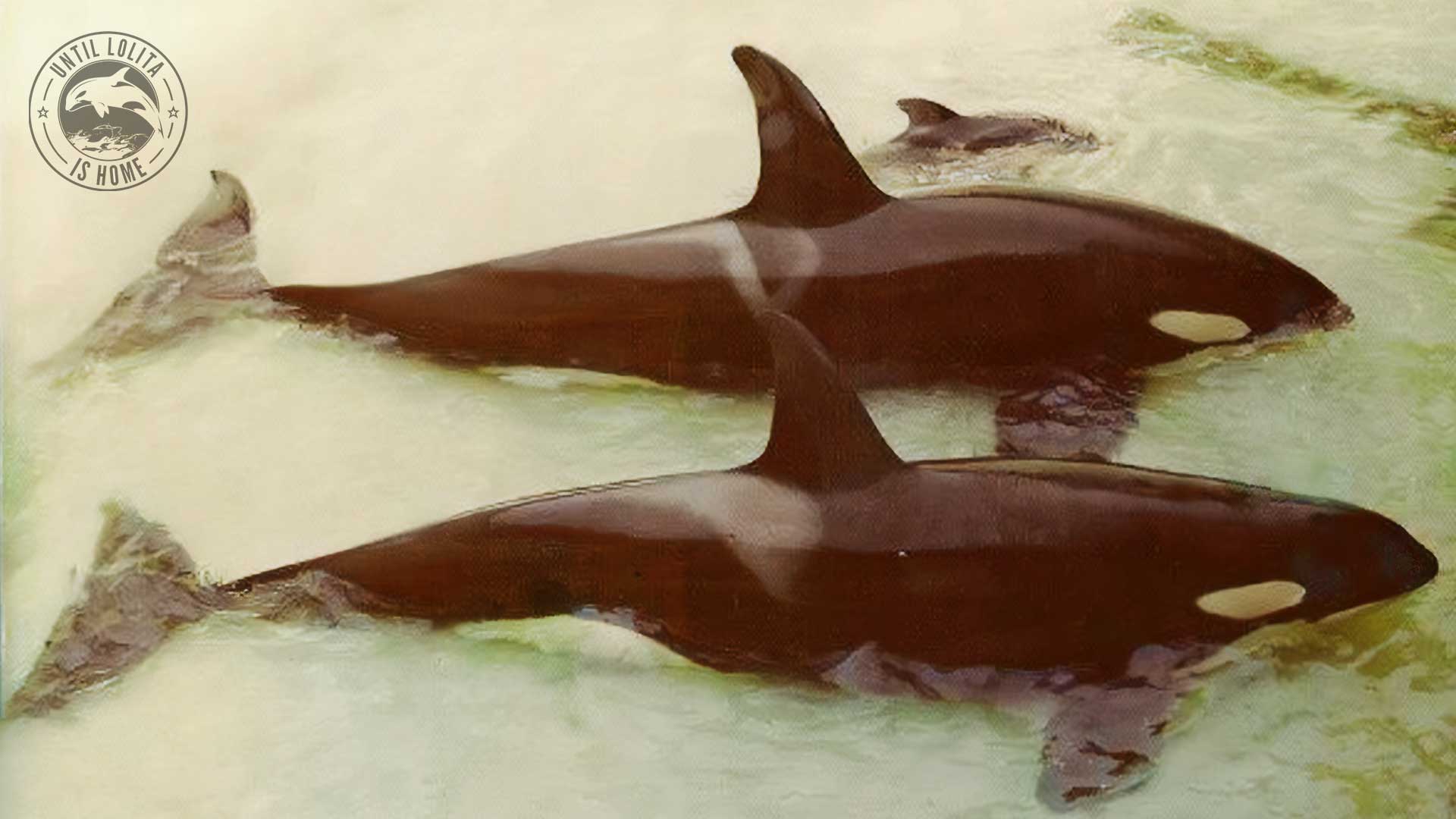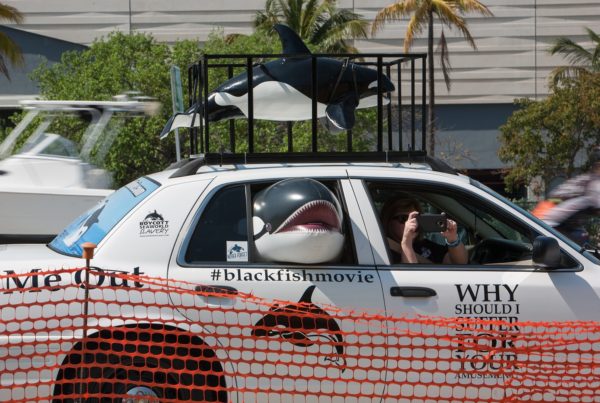Miami Seaquarium opened its doors in 1955, finding fame in the 1960s with the TV series Flipper. Today, when people hear about Miami Seaquarium, they learn about Tokitae’s cruel capture and heartbreaking confinement in the smallest tank in North America.
August 8, 1970, Lolita/Tokitae was one of six juvenile orcas abducted from the waters off Washington state. Juveniles were separated and netted off to await transport into captivity at amusement parks. During those weeks, the adult orcas never left the abduction site, and the sound of their grief-filled calls rang through the cove.
On September 24, 1970, Tokitae arrived at the Miami Seaquarium and given a new stage name: Lolita, to be a playmate for the young male orca named Hugo, captured in Vaughn Bay, near Puget Sound, Washington, in February 1968.
Hugo existed in the tiny Celebrity Bowl for two years; today, the tank houses manatees. He ate 100 pounds of fish daily; the bigger he got, the smaller his confinement became, so after constant delays, they built the infamous Whale Bowl to house him.
Toki was carried across the park to join Hugo on June 2, 1971, after being heard calling out to each other across the park. Unknown to the Miami Seaquarium, both orcas were captured from the Southern Resident orca population and shared similar dialects, allowing them to communicate.
On March 4, 1980, after 12 years of performances and repeated self-inflicted damage to his head, Hugo died of a brain aneurysm. After his death, all references to Hugo ended when a crane dumped his remains into the Miami-Dade landfill. Lolita has been alone for over 42 years, held in the smallest orca tank in North America, surviving in a hot climate and without shade, a direct contrast to her native Pacific Northwest habitat.
Video by Jo Phillips



